psychology: sensation and perception
1/71
There's no tags or description
Looks like no tags are added yet.
Name | Mastery | Learn | Test | Matching | Spaced |
|---|
No study sessions yet.
72 Terms
the senses
sight- a candle flame can be seen 30 miles away on a dark, clear night
hearing- the ticking of a watch can be heard 20 ft away under quiet conditions
taste- sugar can be discerned when 1 teaspoon is dissolved in 2 gallons of water
smell- perfume can be detected when one drop is present in a three-room apartment
touch - a bee’s wing falling from a distance of 1cm can be felt on the check
what is adaptation?
the sensory capacity following prolonged exposure to stimuli
perception facts idk
perception physically constructs and colours our world
in the division of labour, each part of the brain does a little part to help complete the “picture”
the sense of touch first goes to a thin strip of the cortex, which provides a detailed map of the brain
physical vibrations are the first step in the production of sound
smell is the oldest and first sense to develop
basic quality: salty sour, bitter, sweet and umami “pleasant savoury taste”
Gestalts laws of perceptual organization
law of closure
law of similarity
law of proximity
law of simplicity
law of continuity
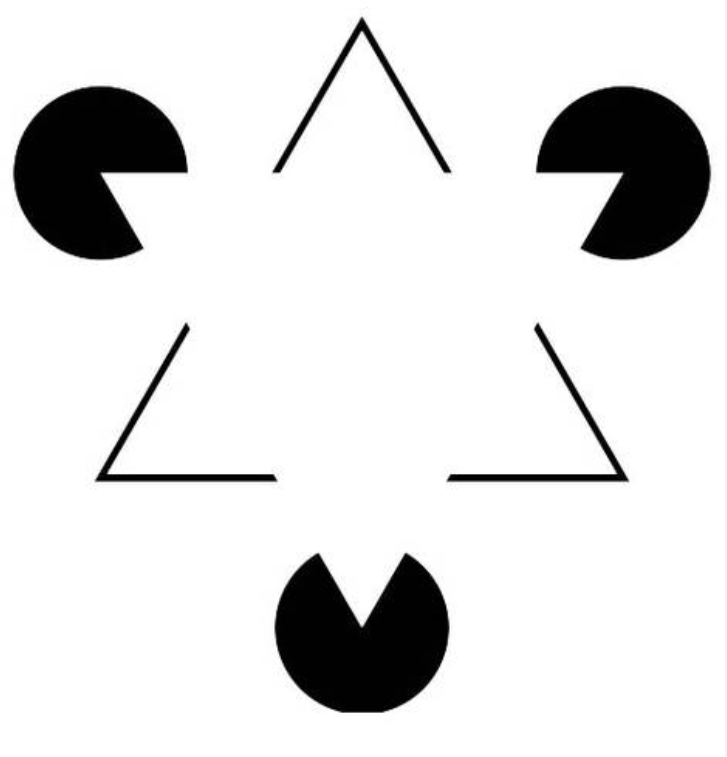
law of closure
objects grouped together are seen as a whole
we tend to ignore gaps and complete contour lines
← There are no triangles or circles, but our minds fill in the mission info to create familiar shapes and images
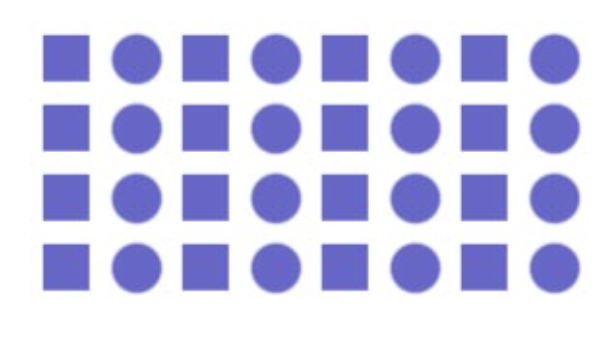
law of similarity
items that are similar tend to be grouped together
← most people see vertical columns of circles and squares
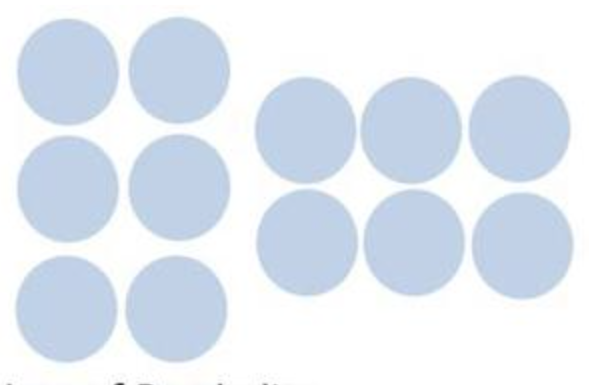
law of proximity
Objects near each other tend to be grouped together
← vertical columns and horizontal rows of circles
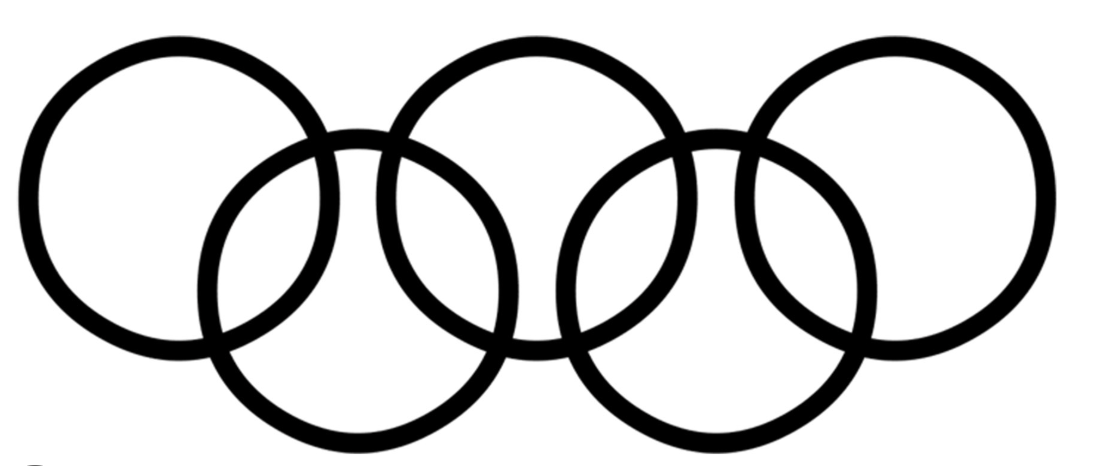
law of simplicity
we organize it into the simplest form possible
← we see a series of circles rather than a bunch of complicated shapes
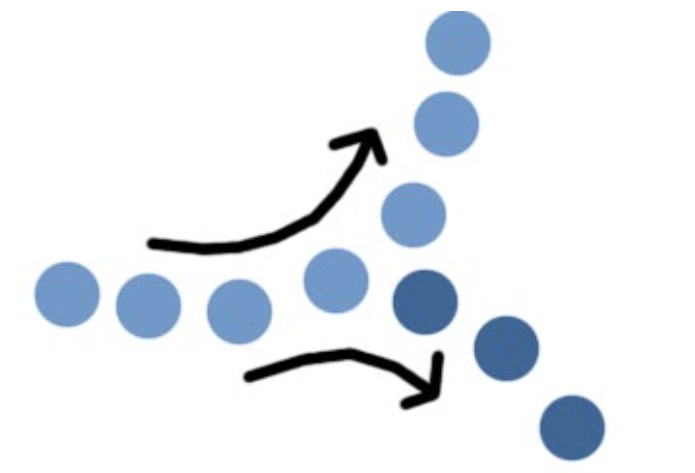
law of continuity
lines are seen as following the smoothest path
← the top branch is seen as continuing the first segment of the line. This allows us to see things as flowing smoothly without breaking lines up into multiple parts
what is sensation
it’s what occurs when a stimulus activates a receptor
what are stimulus
any aspect or change in the environment to which an organism responds
what is perception
the organization of sensory information into meaningful experiences
a sensation may be combined with other sensations and your past experiences to form a perception
absolute threshold
the weakest amount of sensory information that a person can detect half the time
for vision: is the ability to see a candle flame 30 miles away on a clear night
Just noticeable different (JND)
the smallest increase or decrease in the intensity of a stimulus that a person is able to detect half the time
retina
the layer of light-sensitive receptor cells lining the inner eyeball
at the back of the eye
detects images focused on the back of the eye by the lens and the cornea
connected to the brain by the optic nerve
blood vessels
tiny arteries and veins that carry blood to the retina
optic nerve
bundle of nerve fibers that carry information from the retina to the brain
fovea
a dimple in the retina where cones are concentrated and vision is most acute
cornea
a clear tough covering over the iris and the pupil that helps protect the eye and begins focusing light
pupil
an opening that can be enlarged or reduced to let more or less light in by contractions in the muscles of the iris
lens
a clear flexible structure that adjusts the eye’s focus allowing us to see objects both near and far
iris
a muscle that controls the amount of light that enters the eye
it is suspended between the cornea and the lens
the colored part of the eye
aqueous humor
a clear fluid that helps the cornea keep it’s shape
vitreous humor
a thick, clear jelly that helps give the eyeball it’s shape
light
needed to entrance vision
how does the eye work
light first passes through the cornea
light then goes through the pupil
light passes through the pupil to the lens
light is focused through the lens onto the inner lining of the back of the eyeball, the retina
the light stimulates receptor cells called rods and cones
chemical processes in these cells lead to firing of sensory neurons
the neurons converge to form the optic nerve, which relays the message to the brain
texture gradient
refers to the way the detail of a surface changes with distance
linear perspective
a visual cue in which two parallel lines appear to meet together in the distance
relative size
the perceptual phenomenon where an object's apparent size influences how far away it seems
context effects
how environmental factors can influence a person's perception, judgment, or decision-making
relative height
a concept used in visual and artistic perspective where distant objects are seen or portrayed as being smaller and higher in relation to items that are closer
illusions of length
where two lines of equal length appear different in length, often due to the presence of arrowheads or fins at their ends
zöllner illusion
a perceptual distortion where parallel lines appear to diverge or converge when intersected by short, oblique lines
psychophysics
understanding the relationship between sensory experiences and the stimuli that cause these experiences
difference threshold
the smallest change in a physical stimulus such as light or sound that can be detected half the time
signal-detection theory
based on the notion that the stimulus must be detected in the presence of competing stimuli
explains how you hear your name spoken from across a crowded, noisy room
weber’s law
the stronger a stimulus is, the greater the change must be for a person to notice it
our sense detect relative changes, not absolute ones
ex. in hearing, you’re more likely to notice a volume change of 10% higher in a quiet environment but not as noticeably in a loud environment
what is a receptor
a sensation that occurs any time a stimulus activated
what happens without sensory adaptation
you would feel the constant pressure of the clothes on your body
detection threshold
recognizing some stimulus against a background of competing stimuli
vestibular
the system adjacent to the inner ear that controls balance
auditory nerve
the nerve that sends signals from the inner ear to the brain
olfactory nerve
the nerve that carries signals from the nose to the brain
kinesthesis
the sense of movement and body position
binocular fusion
the combination of two images into one
retinal disparity
the difference between the images stimulating each eye
important to your sense of sight since it’s essential for death perception
how do sensory receptors make it possible for you to perceive external stimuli?
they detect specific types of stimuli (ex. light, sound etc) and send signals through nerves to the brain, where the information is processed
rods
black and white
detect light and dark and are more sensitive in low light
cones
detect color
work best in bright light
why do some people see the world in only blacks, whites, and shades of gray?
colorblindness
due to lack of or non-functioning cone cells in their retina
why would you perceive one object as closer than other?
retina disparity
your brain uses cues such as the size of the image on the retina and how both eyes view the object to determine depth and distance
how would you describe the sound of a bass guitar at a rock concert in terms of sound waves?
it produces low-frequency, high amplitude sound waves that create deep, strong vibrations
how can your ears tell you from which direction a sound is coming?
your brain compares the time it takes of the sound to reach each ear and the intensity difference to determine the direction
if you experience dizziness while riding a roller coaster, what is likely occurring?
vestibular sense is gone
your inner ear fluid is being disturbed, which affects your balance and spatial orientation
why does food often taste bland when you have a cold?
sense of smell is reduced, which greatly affects the perception of flavor
how does feeling pain benefit you
alerts you to potential or actual injury, helping you avoid harm and take care of your body
what process makes it possible to bounce a basketball without looking at it?
kinesthesis
the sense that provides information about the body's position and movement, enabling coordinated actions
subliminal message
a brief auditory or visual signal that occurs below the absolute threshold for that sense
gestalt
the perception principle that assumes that the whole is greater than the sum
extrasensory perception
perceiving information about the world through means other than the sense
constancy
perceiving objects in the same way regardless of their distance, angle, or lighting
motion parallax cue
when you move your head from side to side or walk around, the apparent movement of stationary objects relative to one another
illusions
misrepresentations of physical stimuli
gestalts principles
figure-ground, similarity, proximity, continuity, and closure
ex. closure: when you see a broken circle, your brain fills in the gaps and you perceive a complete circle
what occurs during the perception process?
the brain receives information from the senses and organizes and interprets it into meaningful experiences unconsciously
what is figure-ground perception?
the ability to discriminate properly between a figure and its background
what makes perceptual inference possible
our past experiences that make us know what to expect in the present
some might be born with it
what factors influence learning to perceive?
needs
beliefs
expectations
what are some monocular cues used to perceive distance and depth?
size- the bigger the nearer
height - the object farther away from another are higher on your plane of view
what process produces size constancy?
the brain using depth cues to perceive an objects size as constant, despite is changing in retinal image size due to distance
how are illusions created?
when perceptual cues are dissorted so our brains cannot correctly interpret space, size, and depth cues
what are the 4 types of ESP
telepathy - mind to mind communication
clairvoyance - the power to see things that cannot be perceived by the senses
precognition - ability to foretell events
psychokinesis - ability to move objects with one's mind